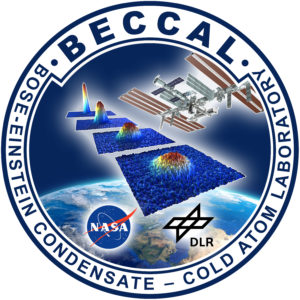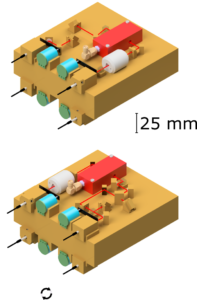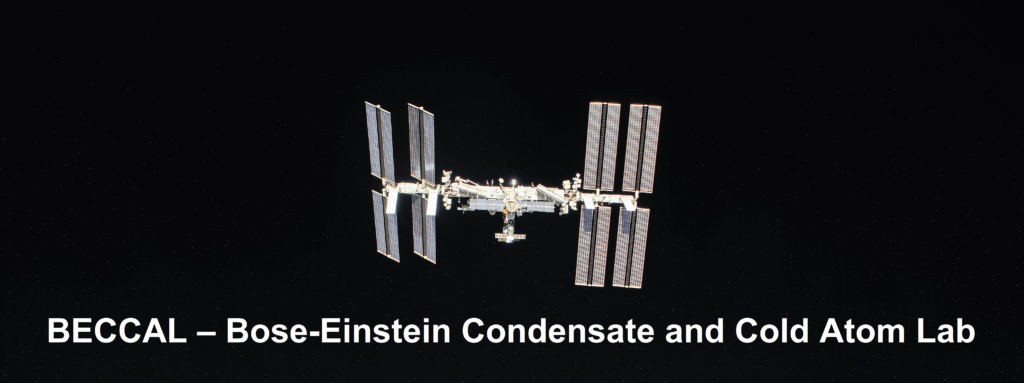Note: We currently have open positions for this project. Feel free to contact us at awenzlaw(at)uni-mainz.de. For further info, see here: PhD position
Overview

Ultra-cold atoms are the cornerstone of a myriad of scientific experiments that enable the study of the fundamental principles of quantum physics, the construction of high-fidelity quantum sensors such as interferometric acceleration and rotation sensors and highly precise frequency standards.
However, these experiments are fundamentally limited on ground by the effects caused by the gravitational force. The most fundamental limitation is that atoms not trapped by a magnetic or optical field will just fall to the edge of the experiment apparatus, thus limiting free evolution times. Previously, we have been using the drop-tower in Bremen as well as sounding rockets as a platform to achieve a microgravity environment and thus circumvent these limitations.
Within BECCAL [1] we want to extend those experiments to the International Space Station (ISS) as successor of the CAL (Cold Atom Laboratory) Experiment.
CAL, developed by NASA's Jet Propulsion Lab (JPL) is a cold atom experiment currently operated on the ISS, allowing numerous experiments on cold and ultracold Rubidium and Potassium, like studying the transport of ultra-cold atoms, magnetic lensing or shell potentials.
The Bose-Einstein Condensate and Cold Atom Lab (BECCAL) is a bilateral collaboration between DLR and NASA, designed to further expand on the experimental and scientific capabilities of CAL. As a multi-user multi-purpose experimental facility, it will enable experiments such as dual-species atom interferometry for a test of Einstein’s equivalence principle, the study of spinor and scalar Bose-Einstein condensates and gas mixtures, strongly interacting gases and molecules and many more.
An ultra-stable laser system for the International Space Station

Together with the Ferdinand-Braun-Institut (FBH) in Berlin and the Humboldt-Universität zu Berlin, who manufacture the micro-integrated optical lasers, we aim to create a highly miniaturized and stable laser system that meets all these requirements.
For the optical benches, we utilize a technology toolkit already tested in previous QUANTUS missions, such as MAIUS [2]. Here, highly miniaturized optical components, mostly made out of Zerodur, are glued onto an optical bench made from the same material. For the BECCAL experiment, we had to adapt this toolkit to meet the even more stringent size requirements aboard the ISS. We effectively double the useable space by using both sides of the optical benches instead of one.
Main Publications
[1] "The Bose-Einstein Condensate and Cold Atom Laboratory", K. Frye et al, submitted to journal (2020)2] "Highly stable Zerodur based optical benches for microgravity applications and other adverse environments", J. P. Marburger et al, Proceedings 1118052 (2019)
Funding
The BECCAL project is supported by the German Space Agency DLR with funds provided by the Federal Ministry for Economic Affairs and Energy (BMWi) under grant number 50 WP 1703.

